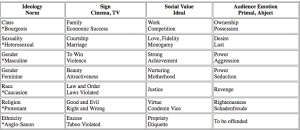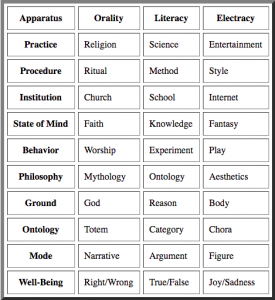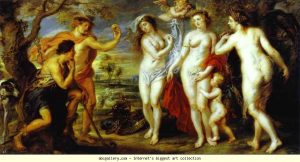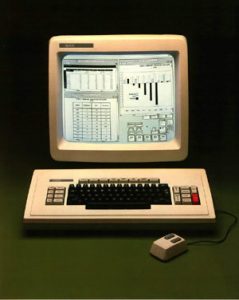POPCYCLE

Mystory. The Wide Image posts reviewed examples of completed careers in which it is possible to recognize the signature of a childhood primal scene of memory. The function of mystory is to discover and design one’s wide image at the beginning of a career, and we will review some careers in which the mystory levels are legible, as relays for composing our own version. The premise of mystory is that disposition is shaped into identity (selfhood, subject) uniquely for each individual during upbringing (ideological interpellation) within a specific habitus of four institutions before entering into career: Family, Church, School, Entertainment. These institutions form a popcycle –the name referring to the circulation of culture across levels, a matrix or system we will explore in detail in KE. Mystory is composed by documenting the scene of interpellation in each of the institutions, using memory and research to register how one became positioned or placed (how one was “called”) relative to the ideological configuration of that institution. The assumption is that identity is not given in nature, but is formed within specific ideology. Ideology names those categories of dominant/subordinant behaviors and attitudes whose shorthand tag is WASP (in Western society). The conventional preferred identity status until recently was White race, Anglo-Saxon ethnicity, Protestant religion, continuing through the inventory to Heterosexual (sexuality) Bourgeois (class) Male (gender). These preferences and categories are breaking down now, manifested in intensely contested policy debates. Identity formation is one of the three fundamental areas of apparatus invention, so one of the concerns of konsult is to engage with new identity behaviors emerging in electracy.
 –Popcycle. The popcycle is structured as an isotopy of microcosm and macrocosm, manifesting an homology of correspondences relating individual faculties (faculty psychology remains relevant in pedagogy) with institutions and even apparati. Understanding of this civilizational recapitulation (ontogeny repeating phylogeny) is one key to egent capability put to work in konsult. By the time egents reach college they have become natives of all four apparati: born into a family and hence a native language (Paleolithic institution, the Paleo apparatus); introduced to Orality through religion, learning ethics (right and wrong behavior) whether directly in the institution of church, synagogue, mosque, or indirectly through popular culture; Literacy is acquired in school, including enculturation into the history and values of a community (a nation); simultaneously with these three interpellations, children encounter Electracy in their consumption of media. Two points must be noted: these institutions are prostheses and collective projections of the intellectual virtues or powers of individuals: Language plus Theoria (Knowing institutionalized in Literacy), Praxis (Willing institutionalized in Orality), Poiesis (Imagining institutionalized in Electracy): theopraxesis. The second point is that at the collective level these institutions are at odds, in opposition and conflict with one another. A challenge for konsult is to invent theopraxesis not only as a skill-set of individuals but also of civilizations.
–Popcycle. The popcycle is structured as an isotopy of microcosm and macrocosm, manifesting an homology of correspondences relating individual faculties (faculty psychology remains relevant in pedagogy) with institutions and even apparati. Understanding of this civilizational recapitulation (ontogeny repeating phylogeny) is one key to egent capability put to work in konsult. By the time egents reach college they have become natives of all four apparati: born into a family and hence a native language (Paleolithic institution, the Paleo apparatus); introduced to Orality through religion, learning ethics (right and wrong behavior) whether directly in the institution of church, synagogue, mosque, or indirectly through popular culture; Literacy is acquired in school, including enculturation into the history and values of a community (a nation); simultaneously with these three interpellations, children encounter Electracy in their consumption of media. Two points must be noted: these institutions are prostheses and collective projections of the intellectual virtues or powers of individuals: Language plus Theoria (Knowing institutionalized in Literacy), Praxis (Willing institutionalized in Orality), Poiesis (Imagining institutionalized in Electracy): theopraxesis. The second point is that at the collective level these institutions are at odds, in opposition and conflict with one another. A challenge for konsult is to invent theopraxesis not only as a skill-set of individuals but also of civilizations.


